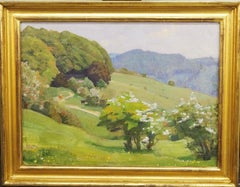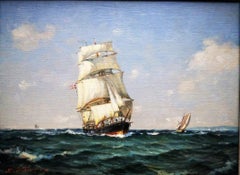Harold Speed Art
Harold Speed was an English painter in oil and watercolor of portraits, figures and historical subjects. Born in London, the son of Edward Speed, an architect, he studied architecture at the Royal College of Art, but soon took up painting. He continued his studies at the Royal Academy Schools between 1891 and 1896, winning a gold medal and a traveling scholarship in 1893. In 1896, he was elected as a member of the Royal Society of Portrait Painters. He exhibited at the Royal Academy from 1893 and held his first one-man exhibition in 1907 at the Leicester Galleries. In 1930, Speed provided paintings for the new chapel of Wesley House, Cambridge. Speed lived in Watlington, Oxfordshire and London, where he died on 20 March, 1957. Because of their intelligent combination of useful advice and sensitive reflection on the nature and meaning of artistic practice, Speed's instructional manuals on drawing and painting have long been considered valuable resources for artists. There are editions of his manual The Practice and Science of Drawing (1913) in the public domain.
Late 20th Century Post-Impressionist Harold Speed Art
Oil
Late 20th Century Post-Impressionist Harold Speed Art
Oil
19th Century Impressionist Harold Speed Art
Oil
19th Century Impressionist Harold Speed Art
Oil
1940s Post-Impressionist Harold Speed Art
Oil
20th Century Post-Impressionist Harold Speed Art
Canvas, Oil
1910s Post-Impressionist Harold Speed Art
Oil
Early 1900s Impressionist Harold Speed Art
Oil
Early 1900s American Impressionist Harold Speed Art
Canvas, Oil
Early 20th Century Pointillist Harold Speed Art
Canvas, Oil, Board
1940s Post-Impressionist Harold Speed Art
Oil
20th Century American Impressionist Harold Speed Art
Oil, Canvas
20th Century American Impressionist Harold Speed Art
Canvas, Oil
Late 19th Century Impressionist Harold Speed Art
Oil
1910s American Impressionist Harold Speed Art
Canvas, Oil
Early 1900s American Impressionist Harold Speed Art
Canvas, Oil





